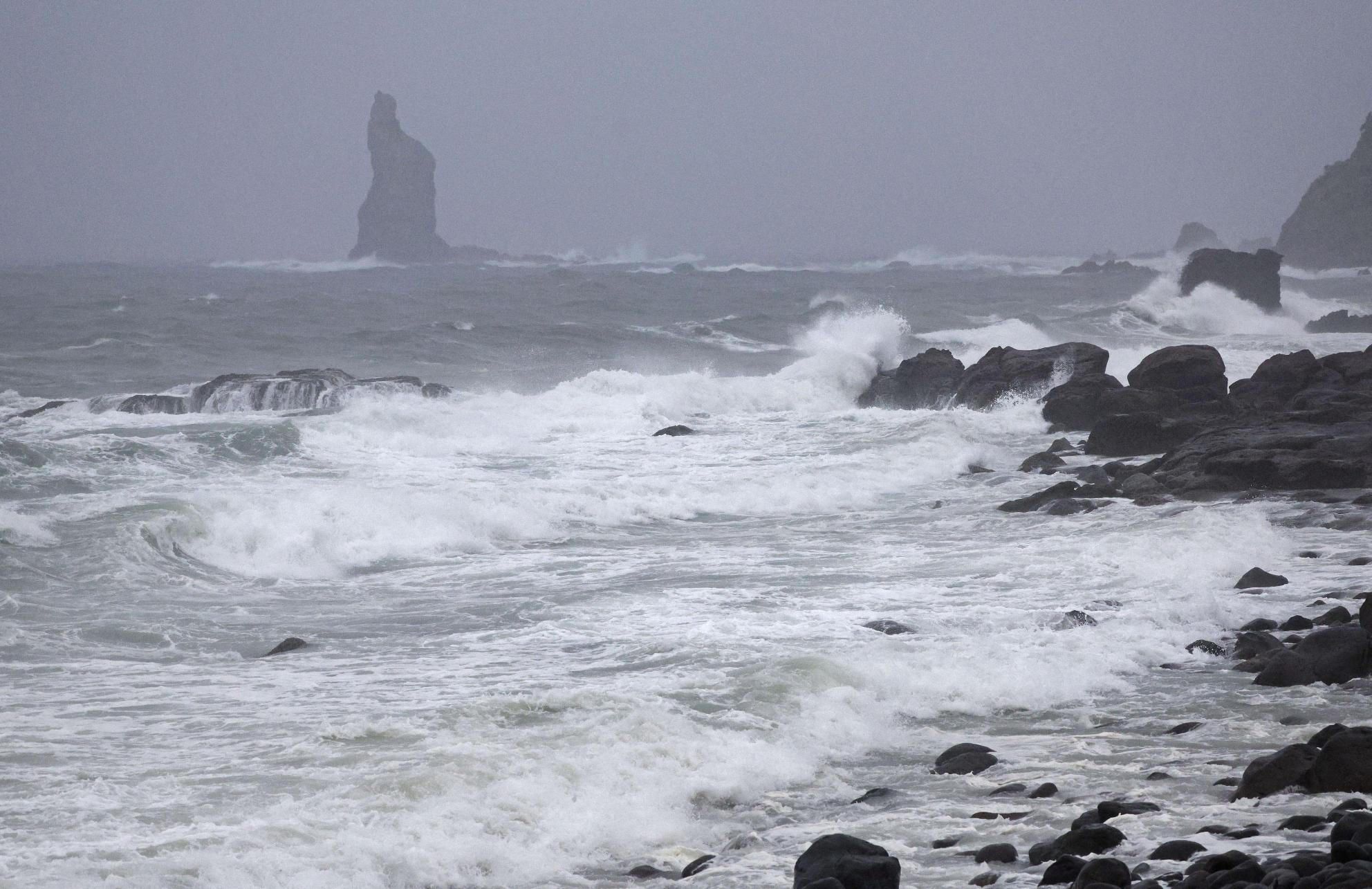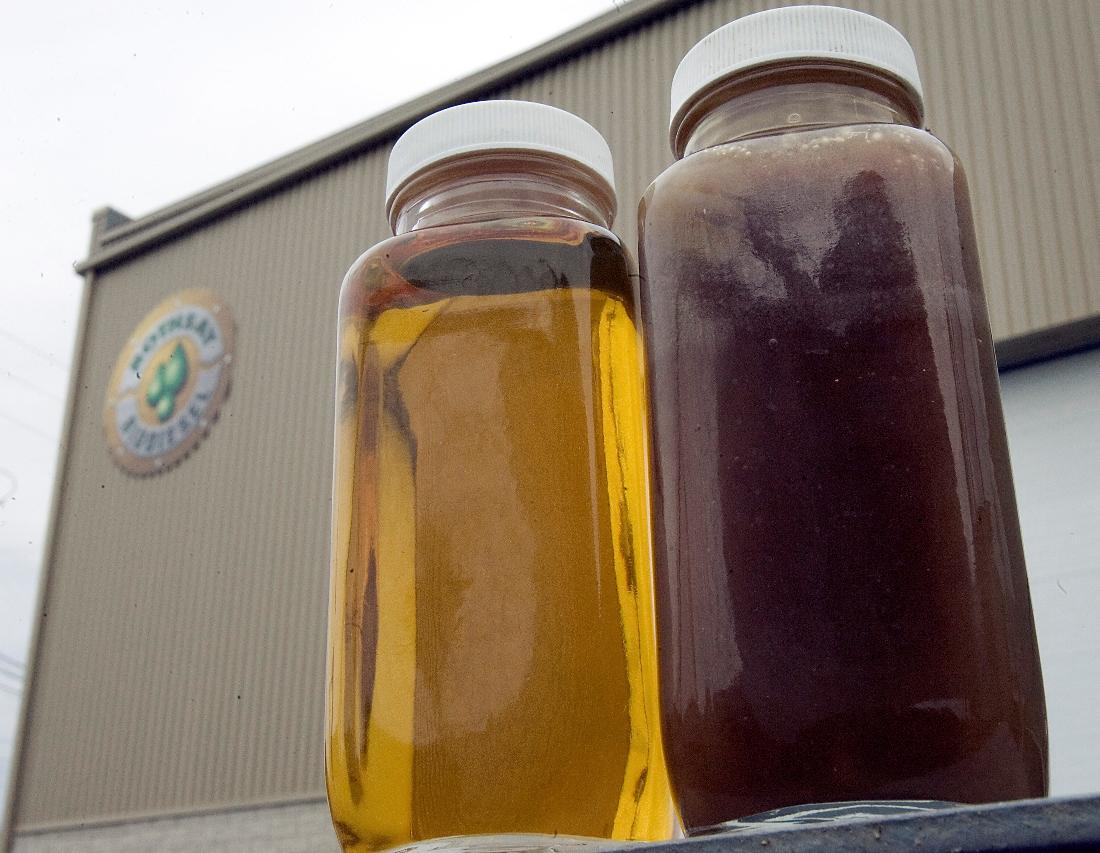
2024-08-28 07:11
ROME, Aug 28 (Reuters) - Torrential rains triggered a landslide in the southern Italian province of Caserta, forcing evacuations, and rescuers were searching for a woman and her adult son on Wednesday who were missing and feared to have died. The bad weather hit the town of San Felice a Cancello, a small town about 30 km (20 miles) northeast of Naples, and nearby municipalities, on Tuesday afternoon. The pair, a woman in her 70s and her son in his 40s, were travelling in a three-wheeler what was overwhelmed by the landslide. Emergency services found its mangled wreck in the mud. "We hope that they jumped out ... and may still be alive somewhere, but from what the experts tell me, there isn't a lot of hope," local mayor Emilio Nuzzo told Italian media. The fire brigade said on X that 10 search squads had been deployed to find the pair, and that the landslide had forced people to be evacuated from their homes. Severe weather hit other parts of Italy on Tuesday as well, with violent thunderstorms and hail in the Milan and Como areas and the Tuscan seaside. Sign up here. https://www.reuters.com/world/europe/landslide-southern-italy-leaves-woman-son-missing-feared-dead-2024-08-28/

2024-08-28 06:58
Aug 28 (Reuters) - A Ukraine drone attack sparked a fire at an oil depot in the Kamensky district of Russia's southern region of Rostov, its governor said on Wednesday, confirming media reports that several tanks were on fire. "There are no casualties," the governor, Vasily Golubev, said on the Telegram messaging app. "Firefighters are extinguishing the fire." Russian air defence units destroyed four drones over the region overnight, the Russian defence ministry said, without mention of an attack on the depot. Earlier, the Baza Telegram channel, which is close to Russia's security services, said three tanks were burning at the Kamensky oil depot after two drones fell on the area. Videos posted on Russian social media showed what looked like large tanks ablaze at night. Reuters was able to identify one of the videos as locaed in Rostov's Kamensky district. There was no immediate comment from Ukraine. A fuel storage depot in the Kamensky district was attacked in early August as well. The attack comes while tanks were still on fire at another oil depot in Rostov's Proletarsk district, about 10 days after a Ukrainian attack, Russian Telegram channels said. Separately, Alexander Gusev, the governor of Voronezh, which borders Ukraine, said debris from a Ukraine-launched drone over the region sparked a fire "near explosive objects". But there was no detonation, he added. The fire was doused, Gusev said on Telegram, and residents were returning to homes in two settlements from which they had been evacuated. The Russian defence ministry said eight attack drones were destroyed over the Voronezh region, but gave no details. Russian officials often do not disclose the full extent of damage inflicted by Ukrainian attacks. Both sides deny targeting civilians in the 30-month-old war launched by Russia's full-scale invasion of its smaller neighbour. Kyiv says its air attacks aim to destroy energy, transport and military infrastructure key to Moscow's war effort. (This story has been refiled to remove an extraneous letter in paragraph 3) Sign up here. https://www.reuters.com/world/europe/ukraines-drones-set-oil-depot-russias-rostov-ablaze-russian-telegram-channels-2024-08-28/

2024-08-28 06:38
TOKYO, Aug 28 (Reuters) - Southwestern Japan braced on Wednesday for what officials say could be one of the strongest storms to ever hit the region, as some residents in the path of Typhoon Shanshan were ordered to evacuate and major firms like Toyota (7203.T) , opens new tab closed factories. Airlines and rail operators cancelled some services for the coming days as the typhoon, categorised as "very strong", barrelled towards the main southwestern island of Kyushu with gusts of up to 70 metres per second (252 km per hour/157 mph). The meteorological agency issued an emergency warning saying the typhoon could bring flooding, landslides and wind strong enough to knock down some houses. "Maximum caution is required given that forecasts are for strong winds, high waves and high tides that have not been seen thus far," Satoshi Sugimoto, the agency's chief forecaster, told a news conference. After striking Kyushu over the next few days the storm is expected to approach central and eastern regions, including the capital Tokyo, around the weekend, the agency said. Authorities issued evacuation orders for more than 800,000 residents in Kagoshima prefecture in southern Kyushu and central Japan's Aichi and Shizuoka prefectures. In Aichi, home to Toyota's headquarters, two people believed to be residents of a house that collapsed in a landslide during heavy rains were unaccounted for. Three residents of the house had been pulled out, according to public broadcaster NHK. Toyota will suspend operations at all 14 of its plants in Japan from Wednesday evening through Thursday morning, it said. Nissan (7201.T) , opens new tab said it would suspend operations at its Kyushu plant on Thursday and Friday morning, while Honda (7267.T) , opens new tab will also temporarily close its factory in Kumamoto in southwestern Kyushu. Also, Mazda Motor (7261.T) , opens new tab plans to suspend operations at its Hiroshima and Hofu plants, both in western Japan, from Thursday evening through Friday, the automaker said. Shanshan is the latest harsh weather system to hit Japan following last week's Typhoon Ampil, which also led to blackouts and evacuations. ANA Holdings (9202.T) , opens new tab said it would cancel more than 210 domestic flights in total between Wednesday and Friday slated to leave or arrive in southwestern Japan, affecting about 18,400 passengers. Japan Airlines (9201.T) , opens new tab said it would cancel 402 domestic flights over the same three-day period. A total of 10 international flights operated by both airlines will also be suspended. Sign up here. https://www.reuters.com/world/japan/japan-braces-typhoon-shanshan-heavy-rain-strong-winds-forecast-2024-08-28/

2024-08-28 06:31
MOSCOW, Aug 28 (Reuters) - Russia said on Wednesday it wanted the International Atomic Energy Agency to take a "more objective and clearer" stance on nuclear safety, a day after the agency head visited a Russian nuclear plant near where Ukraine has mounted an incursion into the country. Separately, Russia said its forces had defused unexploded U.S.-supplied munitions fired by Ukraine that were shot down just 5 km (3 miles) from the Kursk nuclear plant. IAEA chief Rafael Grossi toured the Kursk facility on Tuesday and warned of the danger of a serious nuclear accident there. He said he had inspected damage from a drone strike last week, which Russia had blamed on Ukraine, but did not say who was responsible. Russian state news agency RIA quoted Foreign Ministry spokeswoman Maria Zakharova as saying in a radio interview that Moscow wanted the IAEA to speak out more clearly on issues of nuclear security, although she denied it was demanding that the agency take a pro-Russian line. "We see both the assessments and the work of this structure (the IAEA), but each time we want a more objective and clearer expression of the position of this structure," Zakharova said. "Not in favour of our country, not in favour of confirming Moscow's position, but in favour of facts with one specific goal: ensuring safety and preventing the development of a scenario along a catastrophic path, to which the Kyiv regime is pushing everyone." The IAEA could not immediately be reached for comment. Zakharova's words were indicative of increasing pressure from Moscow on the IAEA, which throughout the 30-month war has urged both sides to refrain from fighting around nuclear plants in order to avoid a catastrophic incident. Kremlin spokesman Dmitry Peskov told reporters that although the IAEA did not have a mandate to assign blame, there was no question about "the guilt of the Ukrainian side in escalating the nuclear danger". Ukraine has not responded to Russian accusations that it attacked the plant near where its forces launched a surprise incursion on Aug. 6 that Russia is still trying to repel. There has been fighting about 40 km (25 miles) from the facility. Russia's National Guard said in a statement on Wednesday that its sappers had found a shell from a U.S.-supplied HIMARS multiple launch rocket system 5 km from the plant, and a rocket fragment which it said was stuffed with 180 unexploded munitions. A video it published of the find showed two soldiers inspecting fragments of the rocket which they said had been shot down by Russian air defences and had partially exploded in the air. There was no immediate comment from Ukraine on the purported Russian find, and Reuters could not independently verify the location of the video. Grossi said during his visit that the plant, built to a Soviet design, was especially vulnerable because - unlike most modern nuclear power stations - it lacked a containment dome that might offer protection in the event of a strike by drones, missiles or artillery. Asked by a reporter at a news conference to condemn the drone damage as a "nuclear provocation" by Ukraine, Grossi replied: "Again, pointing fingers is something that I, as director general of the IAEA, must take extremely seriously. But it is obvious that you cannot separate what we have seen here from the recent military activity that we have seen." Sign up here. https://www.reuters.com/world/europe/russia-criticises-un-nuclear-watchdog-after-trip-plant-close-fighting-2024-08-28/

2024-08-28 06:07
LONDON, Aug 28 (Reuters) - The U.S. Treasury has a lot of debt to place in the next year, but its active management of the maturity profile shows why the oft-heralded U.S. debt "crisis" is unlikely to occur anytime soon. Treasury funding math currently is quite daunting, with more than half a trillion dollars of bills and bonds under the hammer this week alone. But almost three-quarters of this week's deluge is in bills, which mature in 12 months or less, and these will roll over at progressively lower rates if U.S. interest rates decline as expected. While huge weekly Treasury sales are by now familiar, many investors continue to circulate notes expressing concern about the mounting levels of government debt that need to find willing buyers. Torsten Slok, the chief economist at Apollo Global Management, is the latest to warn of potential danger ahead with his "Top 10" list of Treasury factoids. Slok notes that $9 trillion of government debt is maturing over the next year, debt servicing costs have hit 12% of government outlays, trillion-dollar-plus deficits are projected over the next decade, and the debt/GDP ratio is expected to double to 200% by mid-century. His conclusion is simple: Watch out for bumpy auctions, possible credit rating downgrades, and the persistent threat that long-term bond investors will begin to demand a hefty "term premium" to hold long-dated Treasuries. But by front-loading the maturity profile of the debt, the Treasury is revealing one of its main tools to circumvent a debt crunch over the coming year or more. Even though the weighted average maturity of the entire marketable debt stock is still above pre-pandemic levels at close to six years, bills maturing in one year or less make up 22% of the total - well up from the 10%-15% seen both 18 months ago and typical for much of the decade before COVID-19 hit. With policy rates currently more than 5%, that short-term issuance will be costly. But the picture changes considerably if the Federal Reserve moves into rate-cutting mode next month and lops more than 200 basis points off rates over the next year, as the futures markets currently expect. BUILDING BILLS Does this mean the Treasury is deliberately distorting the U.S. government debt market? Analysts at CrossBorder Capital argue the Treasury is doing just that through a policy of "active duration management" (ADM) designed to suppress yields. In a piece headlined "US Treasury Bribes World's Smartest Investor," CrossBorder models what that bill-heavy maturity profile might mean for debt tenors currently receiving less attention, such as the benchmark 10-year Treasury note. The analysts compare the yield on the latter with the much-higher yield on equivalent U.S. mortgage-linked bonds, adjusted for interest rate sensitivity and the related "convexity." Their model shows a whopping 100-basis-point-plus gap between the two, which they suggest is wholly due to this unofficial ADM policy. CrossBorder says a funding discount of that size knocks a full 35 percentage points off the U.S. 2050 debt/GDP ratio forecast. So win-win? Perhaps not entirely. The negatives are less obvious, but no less meaningful. If 10-year yields are suppressed to the degree suggested, then that's one reason why the shape of the yield curve has been persistently inverted for more than two years without the recession many say that predicts actually unfolding. But there are costs to losing such a useful tool in forecasting the future course of the economy and inflation. Also, further reduction in the average maturity profile of the entire debt stock from here makes rollover risk a greater concern. Periodic "accidents," such as debt ceiling rows or temporary default threats in the bill market, could have a disproportionate impact if exposure to bills keeps rising. And even though continuing to jam the bill markets with new paper may reduce debt servicing costs in the near term, what happens when the Fed cycle turns again or the economy truly is in a new world in which higher inflation and elevated rates persist? That risk is especially pertinent given current political realities. Absent a shift in fiscal policy over the coming years, the U.S. debt profile will eventually require some painful adjustments. And, ironically, the lack of market ructions in the interim could actually lessen the chance of political action to rein in the deficits and debt, which will only compound the problem. But what's also clear is government debt managers have multiple tools and sleights of hand to help them navigate this current period without generating the sort of crisis so many forecast. Whether such moves are just temporary stopgaps is another question. But, given recent history, it would seem dangerous to bet that the Treasury and Fed will fail to keep this particular show playing for the foreseeable future. The opinions expressed here are those of the author, a columnist for Reuters. Sign up here. https://www.reuters.com/markets/us/us-treasury-plays-cat-mouse-with-debt-sales-mike-dolan-2024-08-28/

2024-08-28 06:06
U.S. demand for UCO driven by biofuel incentives EU tariffs on Chinese biodiesel boost U.S. imports Future U.S. policy changes create uncertainty for Chinese UCO exporters NEW YORK/SINGAPORE, Aug 28 (Reuters) - U.S. imports of used cooking oil (UCO) from China are set to hit a record in the months ahead, even as regulatory uncertainty casts doubts over longer-term prospects of a trade that boomed last year, according to market participants. U.S. demand for UCO, a feedstock for biofuels like renewable diesel, has surged as federal and state governments launched incentives to support the industry as they aim to decarbonize transportation. That sparked such a frenzied rush to build new renewable diesel plants that U.S. capacity more than doubled from 2021 to 282,000 barrels per day in 2023, according to government data. The rapid surge flipped the U.S. from a net exporter of UCO until 2021, to a net importer since 2022. U.S. imports surpassed 1.36 million metric tons (mt) last year, up from about 400,000 mt in 2022, the data showed. "Demand for UCO from U.S. renewable diesel producers has grown much faster than domestic supply," said Duane Dunlap, owner of renewables consultancy DNS Enterprises. The supply gap has been readily filled by Chinese exporters, who needed a new outlet as demand from their top buyers in Europe shrank from mid-2023 amid complaints of artificially low prices that led to a European Union investigation. The EU began imposing tariffs on Chinese biodiesel imports this month. Imports from China made up half of all the UCO purchased by U.S. refiners last year, compared to a 0.1% share in 2022, customs data showed. This year through June, China accounted for roughly 60% of the roughly 1 million mt of UCO imported by the U.S., the data showed. EU tariffs will likely lift UCO shipments from China to the U.S. even further in the months ahead, two senior biofuel traders in Singapore said. "If it is not wanted in Europe, they will send it to the U.S.," said Adam Schubert, senior associate at fuel consultancy Stillwater Associates. MIXED DEMAND SIGNALS The U.S. biofuels market is set to undergo major changes next year as the government prepares to transition from a program that rewards producers based on output volumes to a qualitative system that will award tax credits based on the fuel's carbon intensity. Since UCO is otherwise a waste product, its carbon footprint is lower than alternative biodiesel feedstocks, such as soybean oil and canola oil. That makes UCO more attractive for producers. However, lobbyists representing U.S. farm-states have called for an extension of the existing tax credits as prices for their commodities have slumped under the weight of lower-cost UCO imports. A bipartisan bill , opens new tab to extend the volume-based system through next year was introduced in the U.S. House of Representatives last month. Similar efforts have resulted in multiple extensions of the current system over the past decade. The credits were set to expire at the end of 2022, before the Inflation Reduction Act extended them through the end of this year. Farmers' groups and lawmakers have also raised concerns over allegations that some Chinese UCO supply could be tainted with virgin palm oil, a product linked to deforestation. The U.S. Environmental Protection Agency confirmed earlier this month that it has been auditing supply chains of at least two U.S. renewable fuel producers amid concerns of fraudulent feedstock usage. U.S. trade policy could also shift dramatically following the November presidential election in the country, which is creating uncertainty for Chinese UCO exporters, one of the Singapore-based traders said. Aside from the recent boom in UCO trade, other relations between the world's two biggest economies have been increasingly strained in recent years. Both sides have lobbed tit-for-tat tariffs on each other's imports since 2017. Republican nominee Donald Trump's vice presidential running mate J.D. Vance last month called China the "biggest threat" facing the United States. Another major upheaval for the global UCO trade will come from Beijing's widely anticipated announcement of Sustainable Aviation Fuel (SAF) production targets. Since SAF also uses UCO as a feedstock, China's push into that market could dry up its UCO export capacity in about five years, one of the traders in Singapore said. "There is a lot of uncertainty right now surrounding future policymaking, but as long as the U.S. does not ban it — which we see as unlikely in the short-term - UCO imports will grow," said Zander Capozzola, vice president of renewable fuels at AEGIS Hedging. "It's just a question of where these imports will come from." Sign up here. https://www.reuters.com/markets/commodities/us-imports-chinese-used-cooking-oil-set-new-record-future-uncertain-2024-08-28/
